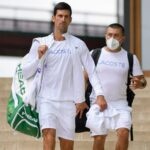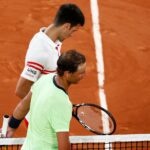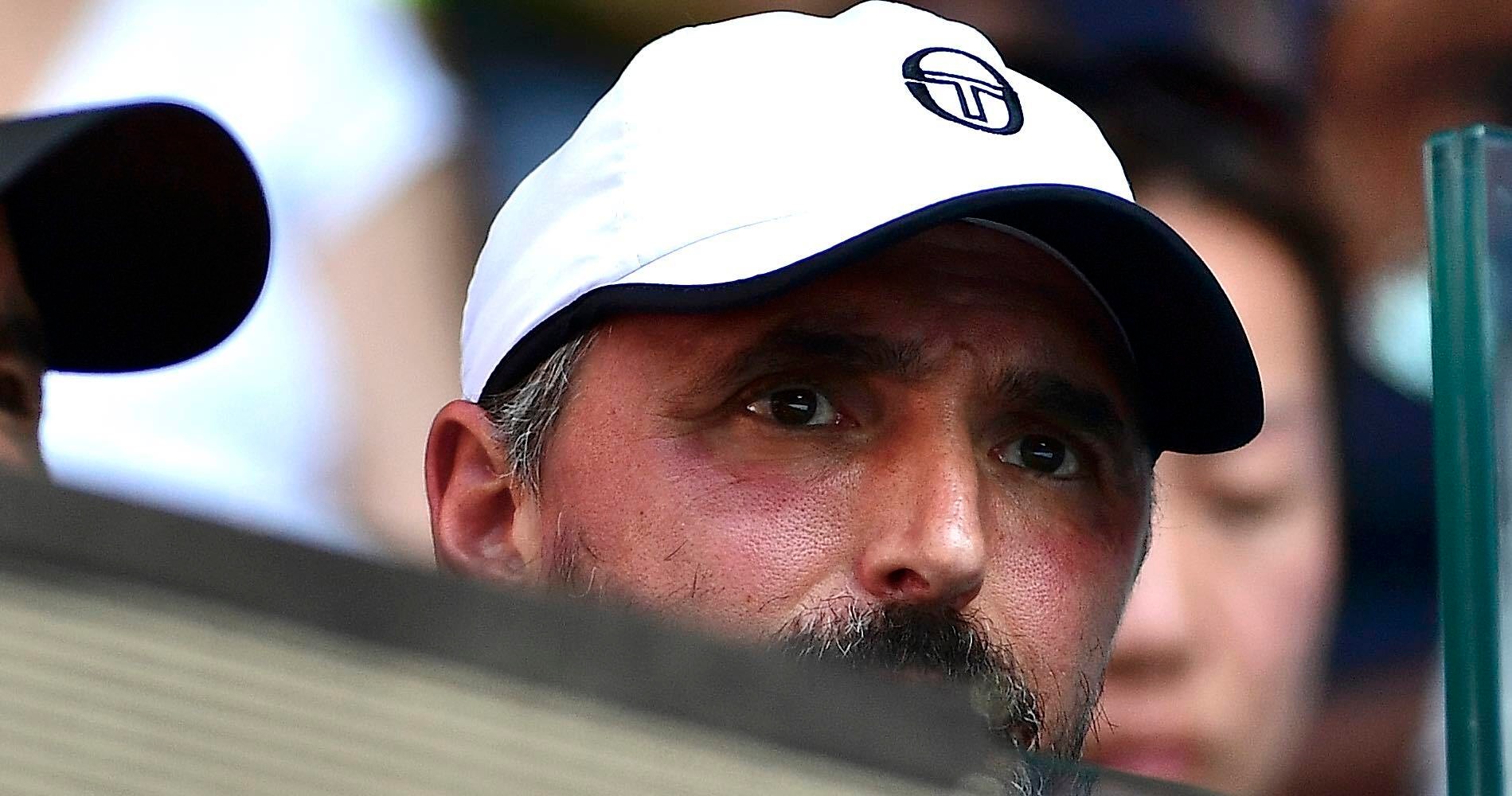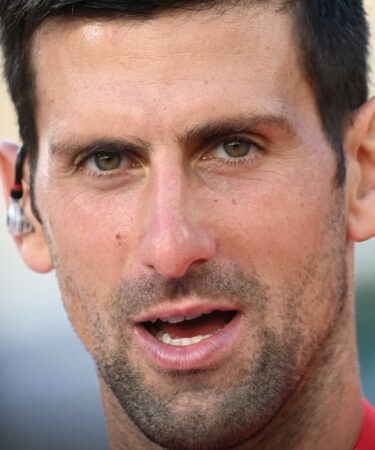The Big Three has become the Big One
The Big Three, made up of Federer, Nadal and Djokovic, is now a thing of the past. Djokovic is now separating himself from his two rivals and fighting alone for the record of victories in majors.
 Tennis – French Open – Roland Garros, Paris, France – June 11, 2021 Serbia’s Novak Djokovic during his semi final match against Spain’s Rafael Nadal
Tennis – French Open – Roland Garros, Paris, France – June 11, 2021 Serbia’s Novak Djokovic during his semi final match against Spain’s Rafael Nadal
His most active fans have been saying it on social media for a few years. The facts are proving them right: in the race for the GOAT (Greatest Player of All Time), or in any case to the player who will have won the most Grand Slams in history, Novak Djokovic advances with the wind at his back. The Serb was at 17 titles six months ago. He is now at 19. There is no guarantee that he will be at 21 in September, but it is a possibility – the calendar Grand Slam – to be considered carefully.
If world tennis were a marathon or a Tour de France stage, Novak Djokovic would be breaking away from the pack without needing to look back.
Before Roland-Garros, it was still possible to see multiple outcomes. After all, Nadal was the favorite to turn the race in his favor, 21-20-18. Meanwhile Federer was heading towards 100% fitness for Wimbledon and hoping to push the count to 21-21-18. But a lot has happened in the span of a month.
Novak Djokovic had one of the greatest performances of his career in Paris, and became the only man in history to defeat the King of Clay more than once on his beloved terre battue en route to Grand Slam title No 19. Federer retired after three rounds at Roland-Garros, leaving open doubts about his ability to sustain his top level for the duration of a Grand Slam.
The statistical reality is now that of 20-20-19. It brings Djokovic closer to Federer and Nadal, but ultimately doesn’t begin to explain the enormous tectonic shift that has occurred. When it comes to assessing Djokovic as the lone rider at the top of world tennis, the argument is easy to make. He is so close to the goal and so domineering that it allows our friend Ben Rothenberg to argue that the Serbian, for all of his work, is already the Greatest of All-Time.
It is by definition debatable (and do not hesitate to discuss it with us) but the GOAT argument for Djokovic is based on objective facts that will be important in the final tally, such as the absolute record of weeks spent by Djokovic in the top of the ATP rankings. Or his ability to dominate his two rivals in their natural habitats (Nadal at Roland Garros, Federer at Wimbledon and at the US Open) while the reverse is not true.
Nadal skips Grand Slams to preserve his health
What weighs more when it comes to signaling the end of the Big Three and the era of the Big One is the sudden slowdown of Djokovic’s two rivals. For the second time in nine months, Nadal, who is a year older than Djokovic, has elected to skip a Grand Slam to preserve his mental health and physical resources. He chose to skip Wimbledon after having already left the US Open off his agenda in 2020.
It would be very unwise to bury a champion who has often come back from the dead and never ceases to proclaim his desire for longevity at the highest level. But Nadal declared in Paris, after his semi-final loss unveiled the unprecedented possibility of seeing him physically beaten, that he should not be expected to win “15, 16 RolandGarros titles, or more”. At Roland-Garros 2022, Nadal will turn 36, the age at which Federer won his last major in Melbourne in 2018.
Roger Federer, who will turn 40 in 40 days, feels “the story is not over,” as he reported in March in Doha. No player or coach on the Tour considers the Swiss unable to win at Wimbledon – it is too reckless with a champion of this caliber. But Federer is walking a tightrope these days at his age, no doubt about that.
He’s chasing one final Wimbledon run, perhaps this year, hopefully next year, in an area of unknown experience where no one knows if his knees, let alone his entire body, will be strong enough to aid him in his final matches to the top of the game. Since May and the Geneva tournament, Federer has no longer made it a secret: he has been piloting his career from day to day with the physical factor at the top of his concerns: an imminent threat, lurking.
Federer no longer beats Djokovic
Djokovic now appears to have very few weaknesses in relation to his two elders. For the past five years, Federer has only beaten Djokovic in a round-robin match at the ATP Finals (which has happened twice). His last victory against the Serbian in the Grand Slam dates back to a semi-final at Wimbledon in 2012, followed by six defeats (four in the final, two in the semi-final).
Against Nadal, the figures are more balanced. Djokovic still leads 4-1 in their last five Grand Slam tussles, and while he lost by a hair in the final in Rome, this encounter gave Djokovic the seeds of his victory at Roland Garros.
Djokovic’s main rivals in 2021 are elsewhere, among the ATP’s Next Gen made up of Daniil Medvedev, world No. 2 and finalist at the Australian Open, and Stefanos Tsitsipas, No. 2 based on 2021 results and finalist in Roland Garros.
“I no longer call us the new generation,” said Tsitsipas, who is slated to potentially face Djokovic in the semi-finals at Wimbledon, during his pre-tournament press conference. “We are hungry, we want to live that too, no need to specify that we are there to stop him, to end his dream. We know it will be difficult. He is currently the best.”
“His level is incredible, really incredible,” adds Medvedev. “Roland-Garros semi and final, I only saw parts, but it was amazing. It would come as no surprise that Djokovic is making history again this year. “
Djokovic has no more “hares” to chase, he is alone
Novak Djokovic has drawn exceptional strength from his rivalry with Nadal and Federer, who have served as pace-making “hares” in his quest for excellence. Exactly ten years ago, he had won just two Grand Slams, compared to sixteen for Federer and ten for Nadal. Over the past decade (39 majors played), the score is 17-10-4 in his favor. Since returning to major titles at Wimbledon 2018, the count has been 7-3-0.
Now that he has separated himself, Djokovic is on his own. The Serbian is too well versed on the fragility of the very high level to ignore that a calendar Grand Slam, or even one or two trophies among the three to come in the next three months – Wimbledon, Olympics, US Open – will require a performance at a state of unheard of excellence.
In 2016, in a comparable situation, Djokovic lost in the third round against Sam Querrey and went another twenty-four months without winning another Major. At the US Open in 2020, the Serbian was a gigantic favorite to win the title but sabotaged himself with his implausible disqualification against Pablo Carreño Busta. The world No 1 was also spending a lot of energy creating the PTPA with Vasek Pospisil. It is a labour of love for Djokovic, and this week at Wimbledon the association for the defense of players is entering a decisive week to prevent the ATP from voting in favour of a thirty-year plan against which the Serb is firmly against.
On Friday, Djokovic took part in an hour-long press conference at the end of the evening, where he expressed the fact that he “has no regrets” about his commitments and the energy that this side adventure continues to take from him.
The amount of pressure that Djokovic now faces, from outside forces and internal ones, as he mounts his quest for the calendar slam, is something that his new rivals are watching closely. If he slips, they want to be there to capitalize on the opportunity.
“It’s going to be nice to see Novak play at Wimbledon, the Games and the US Open,” smiles Medvedev. “He’s going to give it his all. At the same time, he will have enormous pressure on his shoulders. We will try to take advantage of it.”
Meanwhile, Rafael Nadal is resting on his yacht and Roger Federer recalls that his “goal at the moment” is “to advance to week two, and then gain confidence in every game.”
To each his own rhythm. Djokovic is thoroughly confident already. His two biggest rivals no longer can be.
People in this post
More tennis news
Alexandre Muller defeats Cerundolo, reaches first ATP 500 semi-final

February 22, 2007: The day Wimbledon finally announced it would award equal prize money
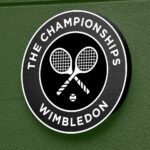
Francisco Comesana stuns Zverev to reach Rio final four
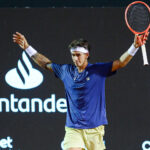
Rio Open: Lucky Loser Ugo Carabelli makes semi-finals

“I’m a different player” – Draper relishes chance to face nemesis Rublev again in Doha final

